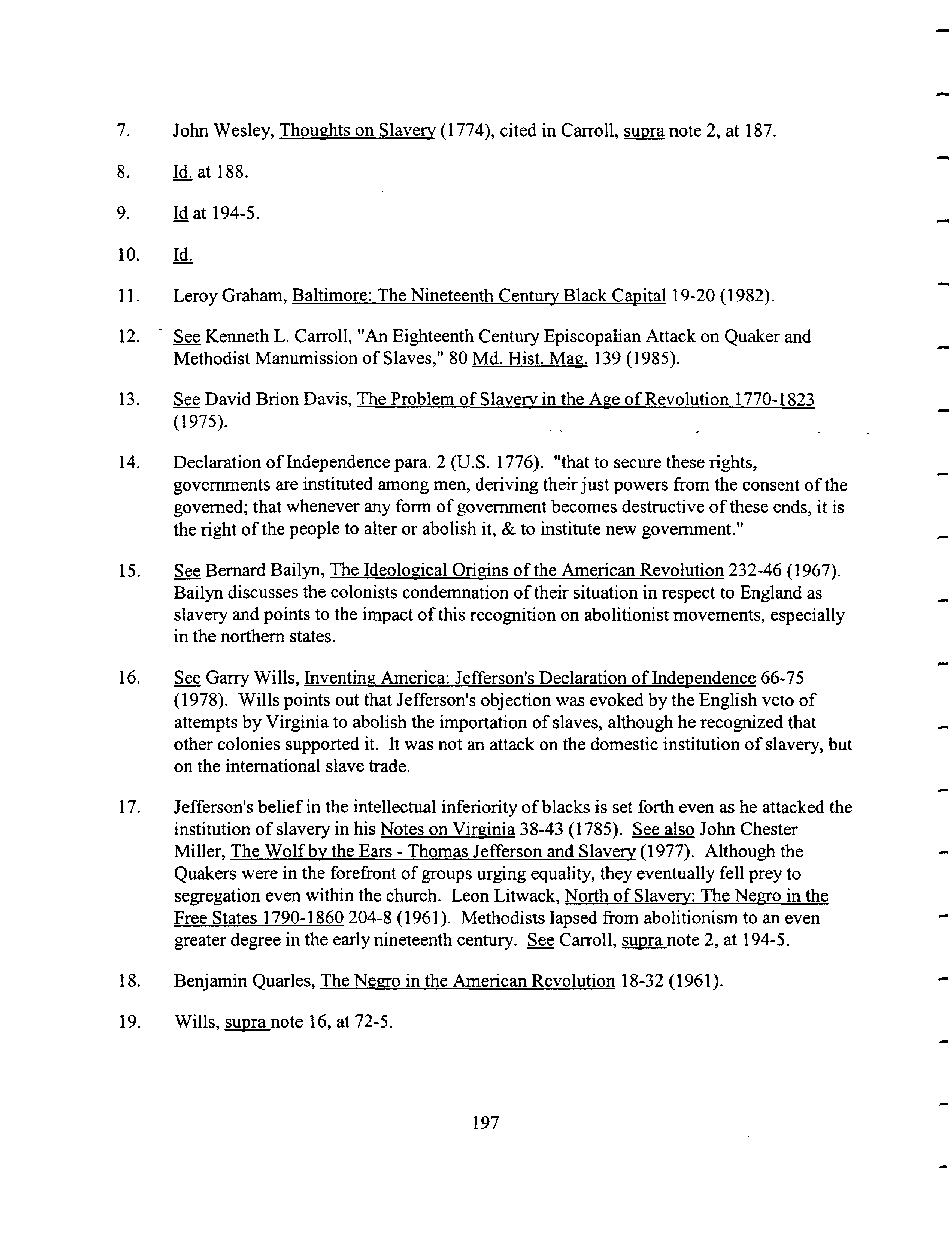|
7. John Wesley, Thoughts on Slavery (1774). cited in Carroll, supra note 2, at 187.
8. Id at 188.
9. Id at 194-5.
10. Id
11. Leroy Graham. Baltimore: The Nineteenth Century Black Capital 19-20 (1982).
12. See Kenneth L. Carroll, "An Eighteenth Century Episcopalian Attack on Quaker and
Methodist Manumission of Slaves," 80 Md. Hist. Mag. 139 (1985).
13. See David Brion Davis, The Problem of Slavery in the Age of Revolution 1770-1823
(1975).
14. Declaration of Independence para. 2 (U.S. 1776). "that to secure these rights,
governments are instituted among men, deriving their just powers from the consent of the
governed; that whenever any form of government becomes destructive of these ends, it is
the right of the people to alter or abolish it, & to institute new government."
15. See Bernard Bailyn, The Ideological Origins of the American Revolution 232-46 (1967).
Bailyn discusses the colonists condemnation of their situation in respect to England as
slavery and points to the impact of this recognition on abolitionist movements, especially
in the northern states.
16. See Garry Wills, Inventing America: Jefferson's Declaration of Independence 66-75
(1978). Wills points out that Jefferson's objection was evoked by the English veto of
attempts by Virginia to abolish the importation of slaves, although he recognized that
other colonies supported it. It was not an attack on the domestic institution of slavery, but
on the international slave trade.
17. Jefferson's belief in the intellectual inferiority of blacks is set forth even as he attacked the
institution of slavery in his Notes on Virginia 38-43 (1785). See also John Chester
Miller. The Wolf by the Ears - Thomas Jefferson and Slavery (1977). Although the
Quakers were in the forefront of groups urging equality, they eventually fell prey to
segregation even within the church. Leon Litwack, North of Slavery: The Negro in the
Free States 1790-1860 204-8 (1961). Methodists lapsed from abolitionism to an even
greater degree in the early nineteenth century. See Carroll, supra note 2, at 194-5.
18. Benjamin Quarles, The Negro in the American Revolution 18-32 (1961).
19. Wills, supra note 16, at 72-5.
197
�
|

